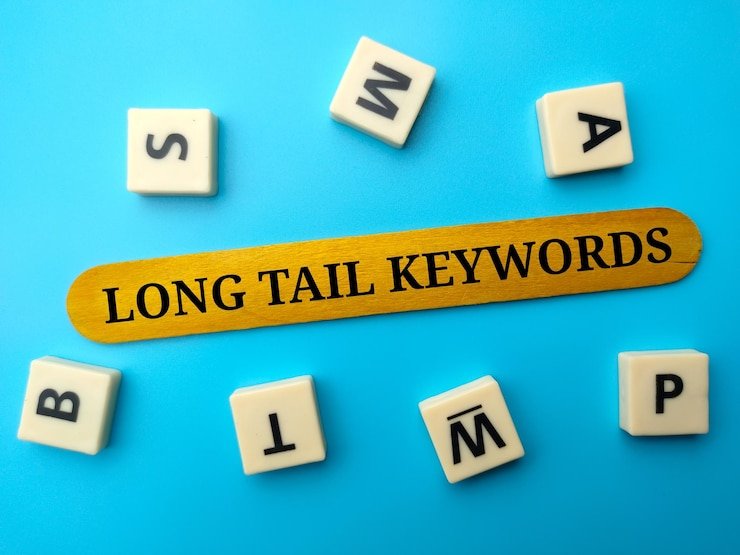If your Shopify store is struggling to attract visitors, low search engine visibility might be the culprit. Organic traffic—people finding your site through Google or other search engines—is a goldmine for eCommerce, but poor SEO (Search Engine Optimization) can keep you buried on page 10 of search results. The good news? You don’t need a massive budget to climb the ranks. In this blog, we’ll break down why your store might be invisible to search engines and share practical, low-cost strategies to boost your Shopify SEO. From optimizing product descriptions to leveraging long-tail keywords, improving site structure, and building backlinks, these tactics will help you drive more traffic without draining your wallet.
The Problem: Low Organic Traffic Due to Poor Search Engine Visibility
Organic traffic is a lifeline for Shopify stores, accounting for up to 40% of eCommerce visits industry-wide. But if your site isn’t ranking on the first page of Google (where 75% of clicks happen), you’re missing out. Common SEO pitfalls include thin product descriptions, ignoring niche keywords, messy site navigation, or a lack of authority from external links. These issues signal to search engines that your store isn’t relevant or trustworthy, keeping your traffic stagnant.

The solution? Smart, budget-friendly SEO strategies that align with how search engines work. Below, we’ll dive into four key tactics—optimizing product descriptions, targeting long-tail keywords, improving site structure, and building backlinks—to help your Shopify store rank higher and attract more clicks.
Strategy 1: Optimize Product Descriptions for Relevance and Appeal
Why It Works
Generic or duplicated product descriptions (like those copied from suppliers) hurt your rankings because Google prioritizes unique, valuable content. Well-crafted descriptions not only boost SEO but also persuade shoppers to buy, reducing bounce rates—a signal Google loves.

How to Implement
- Write Unique Descriptions: For each product, create original copy that highlights benefits, not just features. For example, instead of “Blue cotton T-shirt,” try “Soft, breathable blue cotton T-shirt perfect for casual outings.”
- Incorporate Keywords Naturally: Research keywords (see Strategy 2) and weave them into descriptions, titles, and headers without stuffing. Aim for 100–300 words per product.
- Answer Customer Questions: Include details like sizing, materials, or use cases to match searcher intent (e.g., “ideal for yoga”).
- Use Shopify’s SEO Fields: Edit the meta title (keep it under 60 characters) and meta description (under 160 characters) for each product page to include keywords.
- Add Alt Text to Images: Describe product images (e.g., “blue cotton T-shirt on model”) to help Google understand visuals.
Pro Tip
Check competitors’ descriptions for inspiration, but don’t copy. Use tools like Grammarly (free) to polish your writing and ensure it’s clear.
Strategy 2: Target Long-Tail Keywords for Niche Traffic
Why It Works
Broad keywords like “shoes” are highly competitive and tough to rank for, especially for smaller stores. Long-tail keywords—specific phrases like “women’s vegan leather ankle boots”—have lower competition and attract buyers closer to purchasing. They drive targeted traffic with higher conversion potential.

How to Implement
- Research Long-Tail Keywords: Use free tools like Google Keyword Planner or Ubersuggest to find phrases with decent search volume (50–500 searches/month) and low difficulty. AnswerThePublic is great for question-based keywords (e.g., “best running shoes for flat feet”).
- Focus on Intent: Prioritize keywords showing purchase intent, like “buy,” “best,” or “cheap.” For example, “affordable organic cotton yoga pants” beats “yoga pants.”
- Add Keywords Strategically: Place them in product titles, descriptions, URLs, and blog posts (more on blogs later). For example, a URL like yourstore.com/vegan-leather-ankle-boots is SEO-friendly.
- Monitor Performance: Use Shopify’s analytics or Google Search Console (free) to track which keywords drive traffic and adjust based on results.
- Create Blog Content: Write posts targeting long-tail keywords, like “How to Choose Vegan Leather Boots for Winter,” to attract organic clicks and link to products.
Pro Tip
Aim for 3–5 long-tail keywords per product page. Check Google’s “People Also Ask” section for ideas on what your audience is searching.
Strategy 3: Improve Site Structure for Crawlers and Users
Why It Works
A clear site structure helps search engines crawl your store efficiently and understand its hierarchy, boosting rankings. It also improves user experience, keeping visitors on your site longer—another positive signal for Google. Messy navigation or orphaned pages (those not linked anywhere) can tank your SEO.

How to Implement
- Simplify Navigation: Limit top-level menu items to 5–7 categories (e.g., “Clothing,” “Accessories,” “Sale”). Ensure every product is reachable within 3 clicks from the homepage.
- Use Internal Links: Link related products, collections, or blog posts within your site. For example, a product page for “running shoes” could link to a blog post on “Best Shoes for Marathons.”
- Optimize URLs: Keep them short, descriptive, and keyword-rich (e.g., yourstore.com/mens-running-shoes instead of yourstore.com/product123).
- Create Collections: Group products logically (e.g., “Summer Dresses” or “Eco-Friendly Gifts”) and optimize collection pages with keywords and descriptions.
- Fix Broken Links: Use free tools like Screaming Frog (limited free version) to find and redirect broken pages, ensuring Google can crawl everything.
- Submit a Sitemap: Shopify auto-generates an XML sitemap (found at yourstore.com/sitemap.xml). Submit it to Google Search Console to help crawlers index your site.
Pro Tip
Test your navigation: Can a visitor find a product in 10 seconds? If not, streamline menus and add a search bar (Shopify’s default works well).
Strategy 4: Build Backlinks to Boost Authority
Why It Works
Backlinks—links from other websites to your store—are like votes of confidence in Google’s eyes. They signal trustworthiness and authority, helping you outrank competitors. While paid link-building can be pricey, there are budget-friendly ways to earn quality backlinks naturally.
How to Implement
- Create Shareable Content: Write blog posts, guides, or infographics that others want to link to, like “10 Sustainable Fashion Tips for 2025.” Promote them on social media or X to attract attention.
- Reach Out to Niche Sites: Contact bloggers, local businesses, or industry sites in your niche (e.g., fitness blogs for activewear). Offer to guest post or collaborate on content.
- Leverage Suppliers or Partners: Ask suppliers to link to your store from their “Where to Buy” pages. If you sell local products, pitch to community sites.
- Get Listed in Directories: Submit your store to free, reputable directories like Google My Business, Yelp, or niche-specific lists (e.g., eco-friendly product directories).
- Engage in Communities: Share expertise on forums, Reddit, or X threads related to your niche, subtly linking to your store where relevant (avoid spamming).
- Monitor Backlinks: Use free tools like Moz Link Explorer (limited version) to track who’s linking to you and disavow low-quality links if needed.
Pro Tip
Focus on quality over quantity—one link from a respected site (e.g., a local news outlet) is worth more than 10 from spammy directories.
Bonus Tips to Maximize Your SEO Efforts
- Optimize for Mobile: Over 50% of searches happen on mobile, and Google prioritizes mobile-friendly sites. Use Shopify’s responsive themes and test with Google’s Mobile-Friendly Test tool.
- Track Results: Set up Google Analytics and Search Console (both free) to monitor traffic, rankings, and click-through rates. Shopify’s analytics dashboard also shows organic traffic trends.
- Update Regularly: Refresh product descriptions, blogs, and collections every 6–12 months to keep content relevant and signal activity to Google.
- Speed Up Your Site: Slow load times hurt rankings. Compress images with TinyPNG, limit apps, and use Shopify’s CDN. Aim for under 3 seconds (test with GTmetrix).
- Experiment and Learn: SEO takes time—expect 3–6 months to see big gains. Test one change at a time (e.g., new keywords vs. updated URLs) to pinpoint what works.
Why Shopify SEO Matters
Effective SEO doesn’t just drive traffic—it brings the right traffic: people actively searching for your products. Unlike paid ads, organic traffic is sustainable and compounds over time, making it a cost-effective way to grow. By optimizing product descriptions, targeting long-tail keywords, streamlining your site, and earning backlinks, you’re building a foundation for long-term success without breaking the bank.
Ready to Skyrocket Your Shopify Rankings?
At Digital Pro, we’re passionate about helping Shopify stores dominate search results. From crafting SEO-friendly content to fine-tuning your site structure, we deliver results without the hefty price tag. Want a free SEO audit to uncover quick wins for your store? Contact us today and let’s get your traffic soaring.
Read More :-
Struggling to Stand Out? How to Build a Unique Shopify Brand on a Budget
Abandoned Carts Killing Your Sales? 6 Proven Strategies to Recover Lost Revenue
Why Your Shopify Store Isn’t Converting: 5 Common UX Mistakes and How to Fix Them
